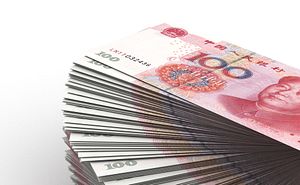China is expect to opt for monetary easing in 2015, as the economy continues to lag. The last strong dose of monetary policy was implemented on November 21, 2014, when China’s central bank cut benchmark interest rates for the first time since July 2012. On December 27, 2014, the central bank released a circular that stated it plans to include some interbank deposits, including savings for securities and transaction settlement and savings held for banks by non-deposit taking institutions, as banks’ deposits, allowing for the expansion of loans as loan to deposit ratios increase.
Chinese banks can lend up to 75 percent of deposits under the current commercial banking law. This law is not necessary under the new Basel III standards, which have recommended that central banks now require a 100 percent liquidity coverage ratio (LCR). The LCR requires total coverage of cash outflows that can occur over the course of thirty calendar days by high quality liquid assets. China is in the process of implementing this new policy. As of now, the commercial banking law, put into place in 1995, creates the additional stipulation that banks can only lend up to 75 percent of deposits.
As of the end of November 2014, the loan to deposit ratio was 74 percent, close to the 75 percent ceiling. The current economic slowdown, caused by flagging manufacturing and a decline in the real estate sector has increased the need for policy stimulus. The need for easing policy is ironically better underscored by real rather than monetary indicators.
The Shanghai Interbank Offer Rate (SHIBOR) climbed in mid-December, with one-month bond repos hitting a high of 5.277 percent, rising thereafter, due at least in part to the annual holiday cycle. The SHIBOR increase on December 17 was also attributed to changes in the Medium Term Lending Facility (MLF), as the central bank renewed some maturing MLF, cutting some to major banks in half. For these reasons, it is difficult to distill to what extent the current SHIBOR tightness reflects a real credit crunch.
Because of the monetary tightness witnessed in December and the continued slump in real economic indicators such as the purchasing managers’ index (PMI) and real estate home prices, analysts have been predicting that the People’s Bank of China (PBC) will implement another cut in the required reserve ratio (RRR). Additional liquidity will stimulate economic activity in an economy that has experienced low levels of manufacturing activity and a poorly performing real estate sector. A reduction in the RRR, a decline in benchmark interest rates, or direct injections of liquidity by the central bank can promote lending to a variety of sectors.
Monetary policy, in its usual form, has been referred to as a “blunt sword” since it normally does not target specific sectors (although the PBC has previously injected funds earmarked for specific sectors, crossing over into the realm of fiscal policy). Reform is necessary to revive growth by placing emphasis on new sources of productivity, as these areas of the economy will not naturally develop, given existing stringent regulation on their business and financial development. Service sector reforms must continue, since low-wage manufacturing continues to lose its comparative advantage. In the short run, tighter monetary conditions will likely prevail through the Spring Festival in February, as depositors withdraw funds for the holiday season, shrinking the deposit base from which loans are launched.

































